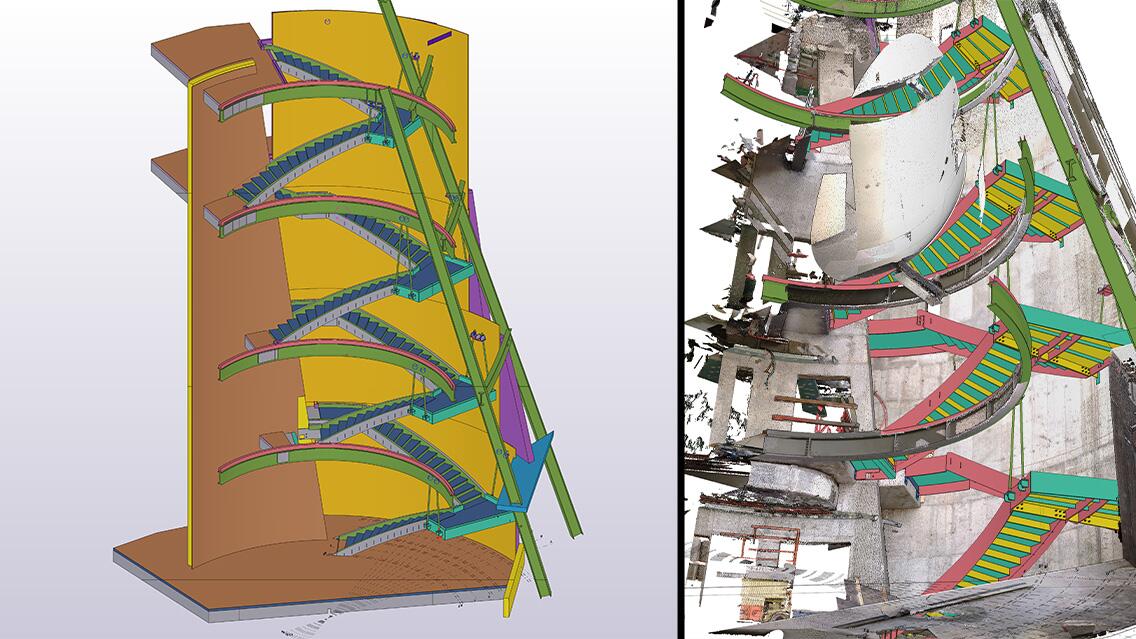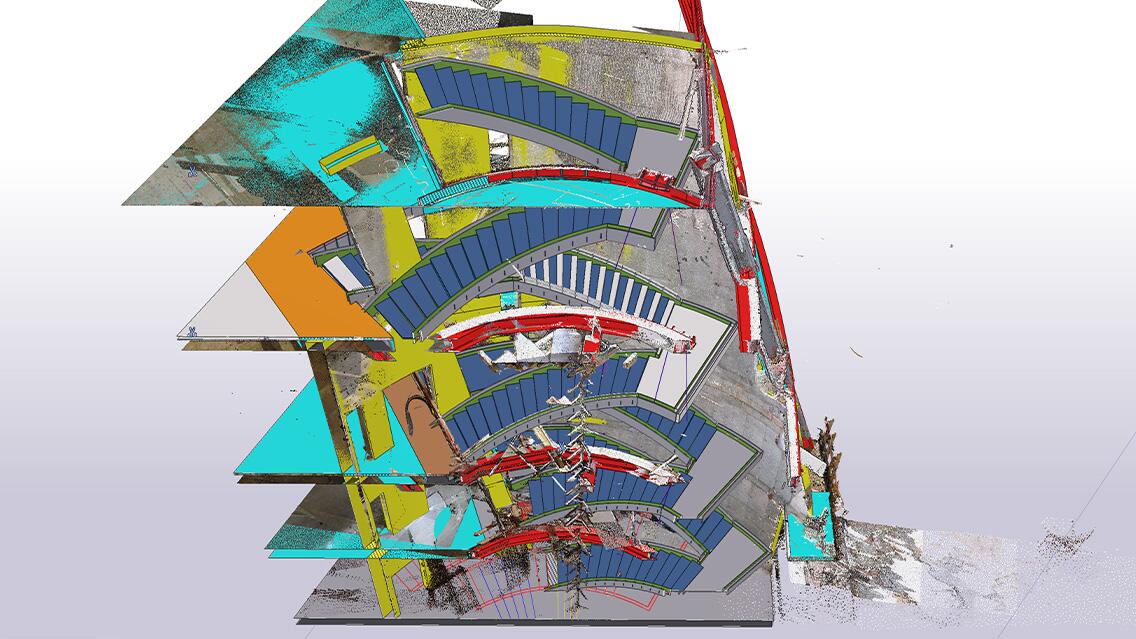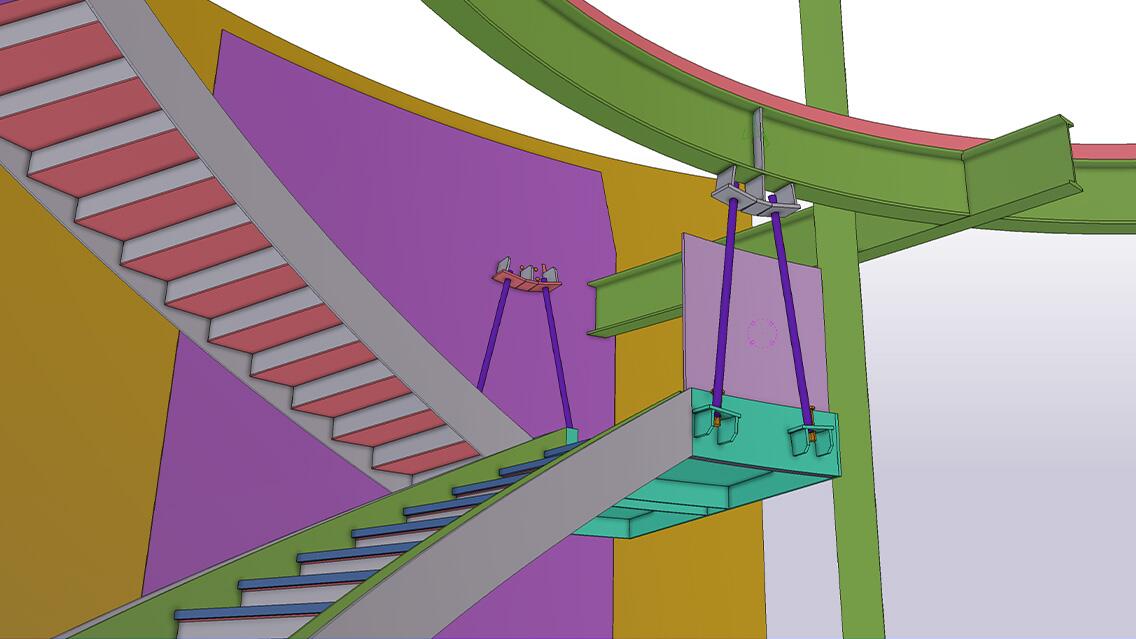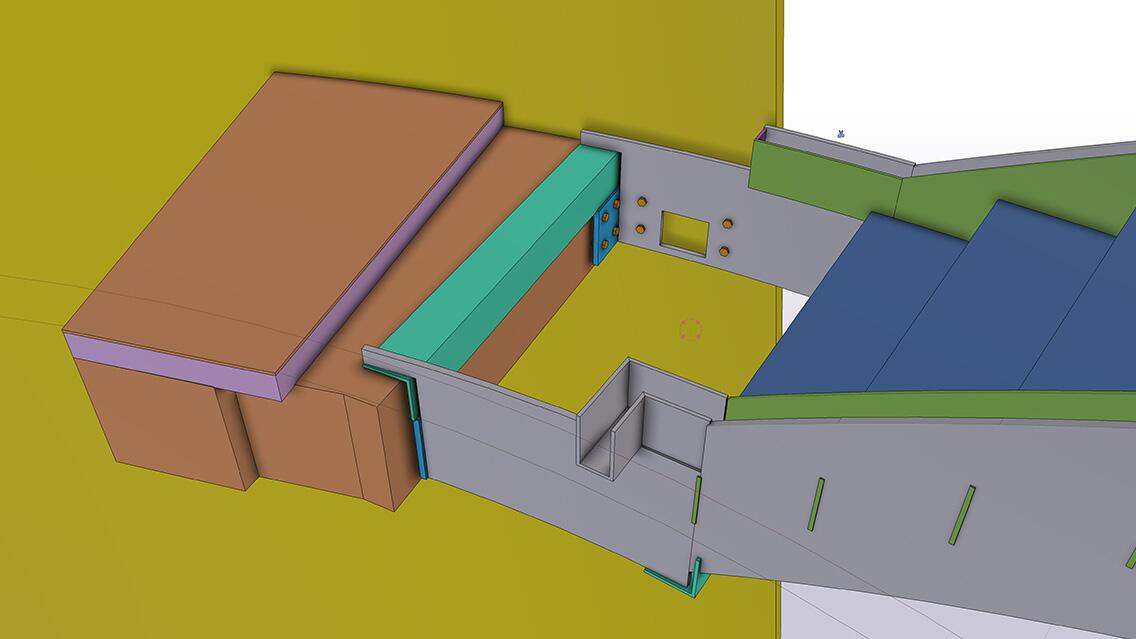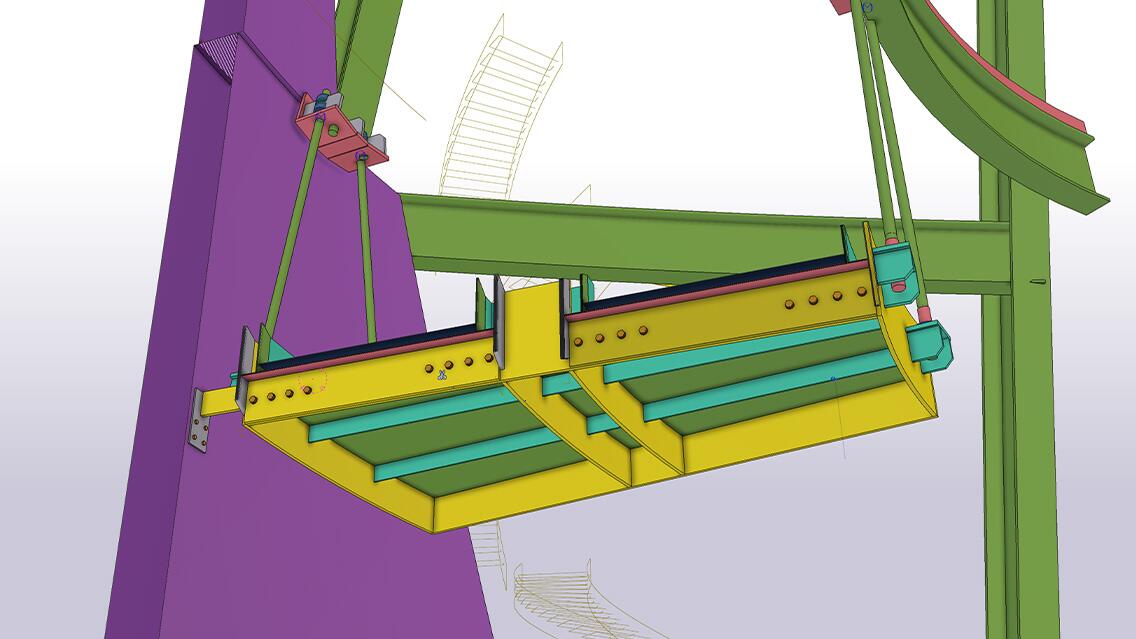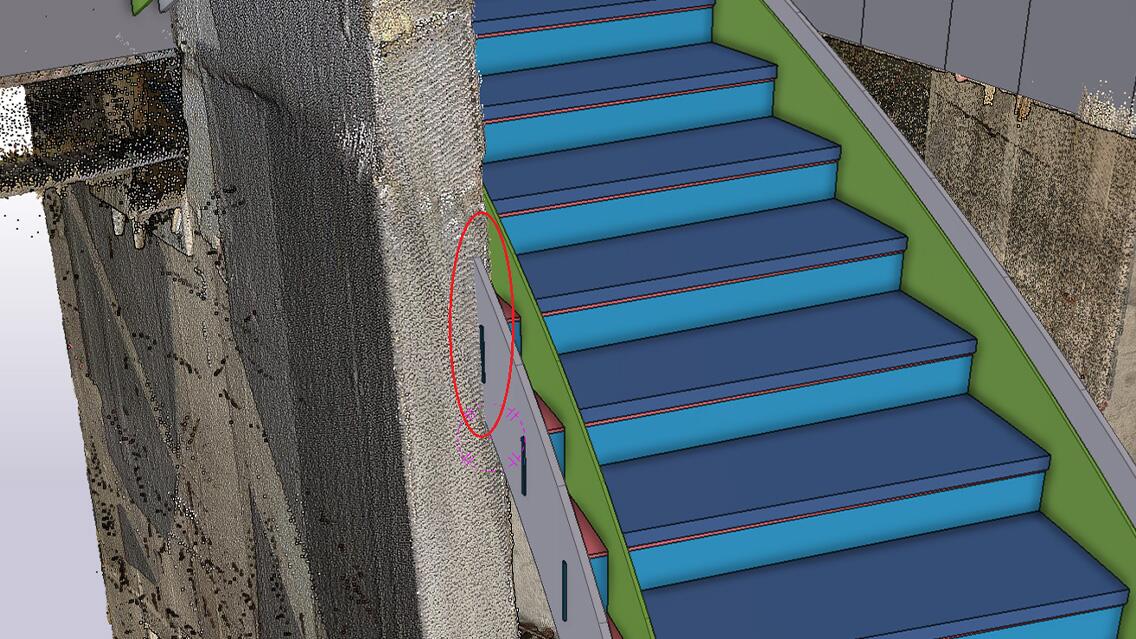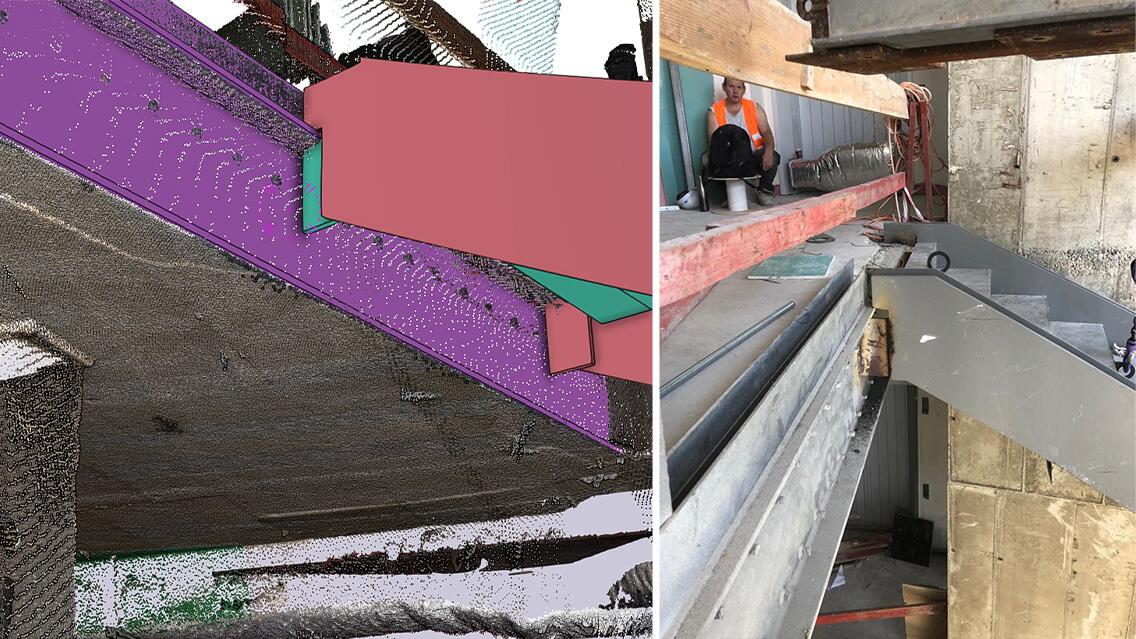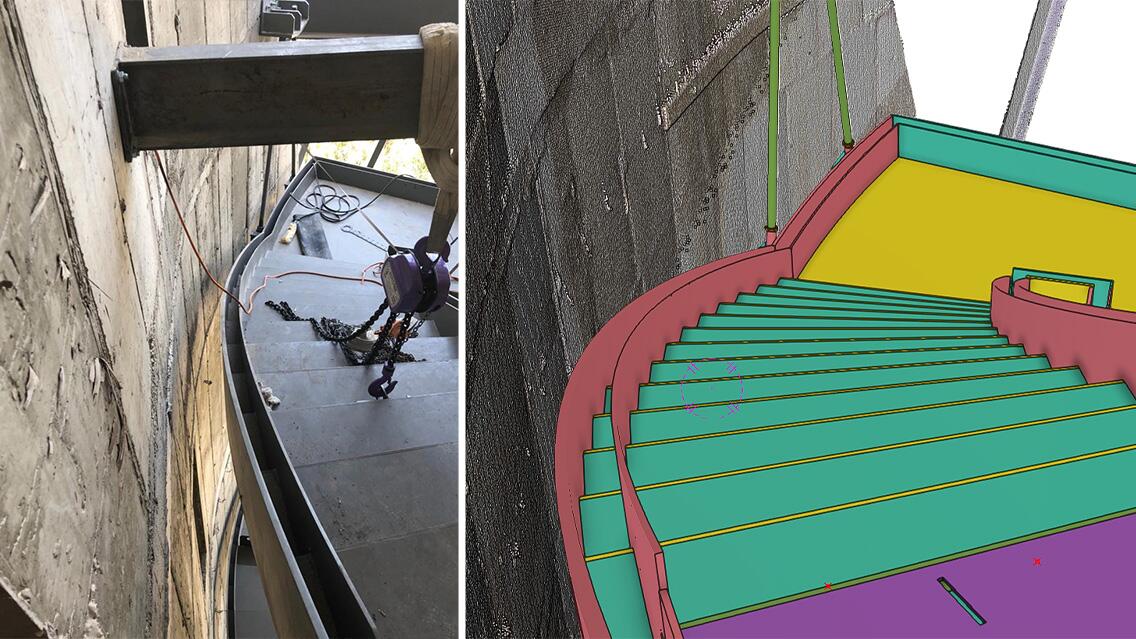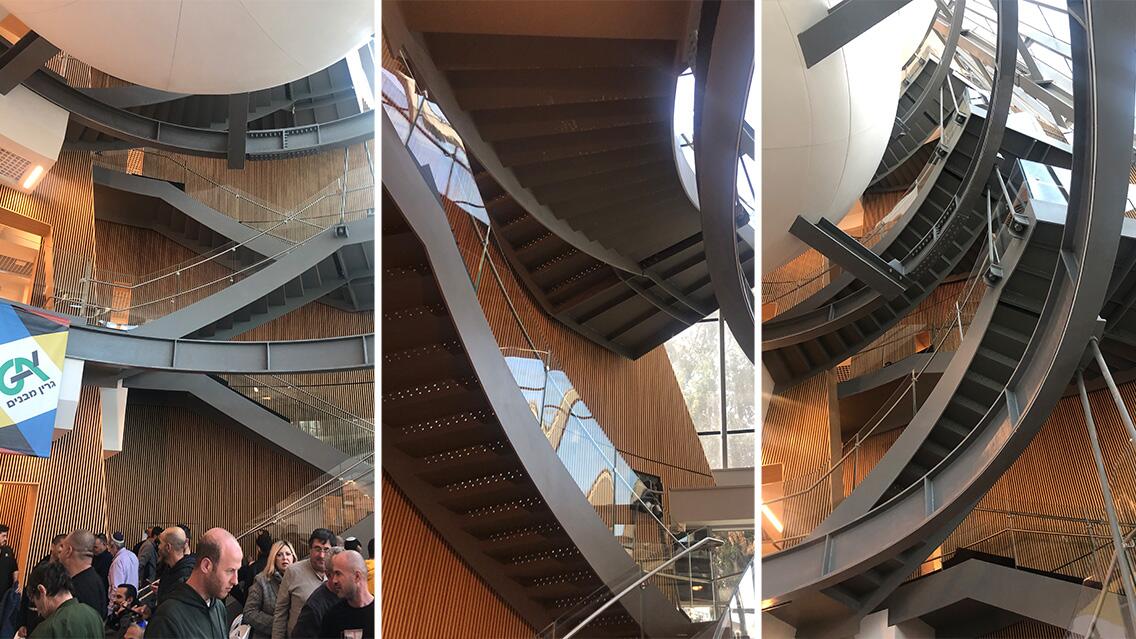The Hanging helical stairs system works as a link between communicates all offices and laboratories in the Comparative Medicine building
The Comparative Medicine Building, located within the well known Weizmann Institute of Science is a six-storey construction in an area of about 10,000 square meters. It will includes laboratories, imaging rooms, technical areas, and offices. The stairs are a functional three-dimensional sculpture that continues the scientific spirit and sophistication of the building, from which three Nobel laureates and three Turing Prize winners emerged from!
A project characterised by its accuracy
The first challenge started with maintaining millimetre accuracy in all axes and the spiral system, making sure it was levelled throughout.
The second challenge was the stair design. It had to accommodate a concrete wall that was cast in an earlier stage and it also had to remain parallel, at equal distances, all the way. Some of the stairs in the system pass between concrete walls, and some are adjacent to or fixed to cast concrete beams.
The next challenge I encountered was the stairs not being located one above the other or with even the heights from the floors. This meant each set of stairs would have different dimensions and features from the other but had to be similar enough to the human eye.
The fourth challenge faced was production control. As it's known in the industry, steel rollers normally lose the accuracy, especially when there are so many limitations, this only increased the overall challenge.
I am very proud to have overcome all the challenges especially in a place like the Weizmann Institute of Science which is visited by many physicists and scientists.
With Tekla software, I was able to calculate technical and visual capabilities, with the convenience of use, organising all aspects of the project, especially when it came to working effectively with point clouds.
Important points or benefits:
- Maximum horizontal deviation arc: 5 millimeters.
- Maximum vertical deviation: 4 millimeters.
- For production control we built a system of stencils weighing 10 tonnes.
- We provided working plans and data for others, like wooden steps, glass railings etc.
- The minute the architect saw the model inside the point cloud, they knew that this was serious guy, using a serious software.
